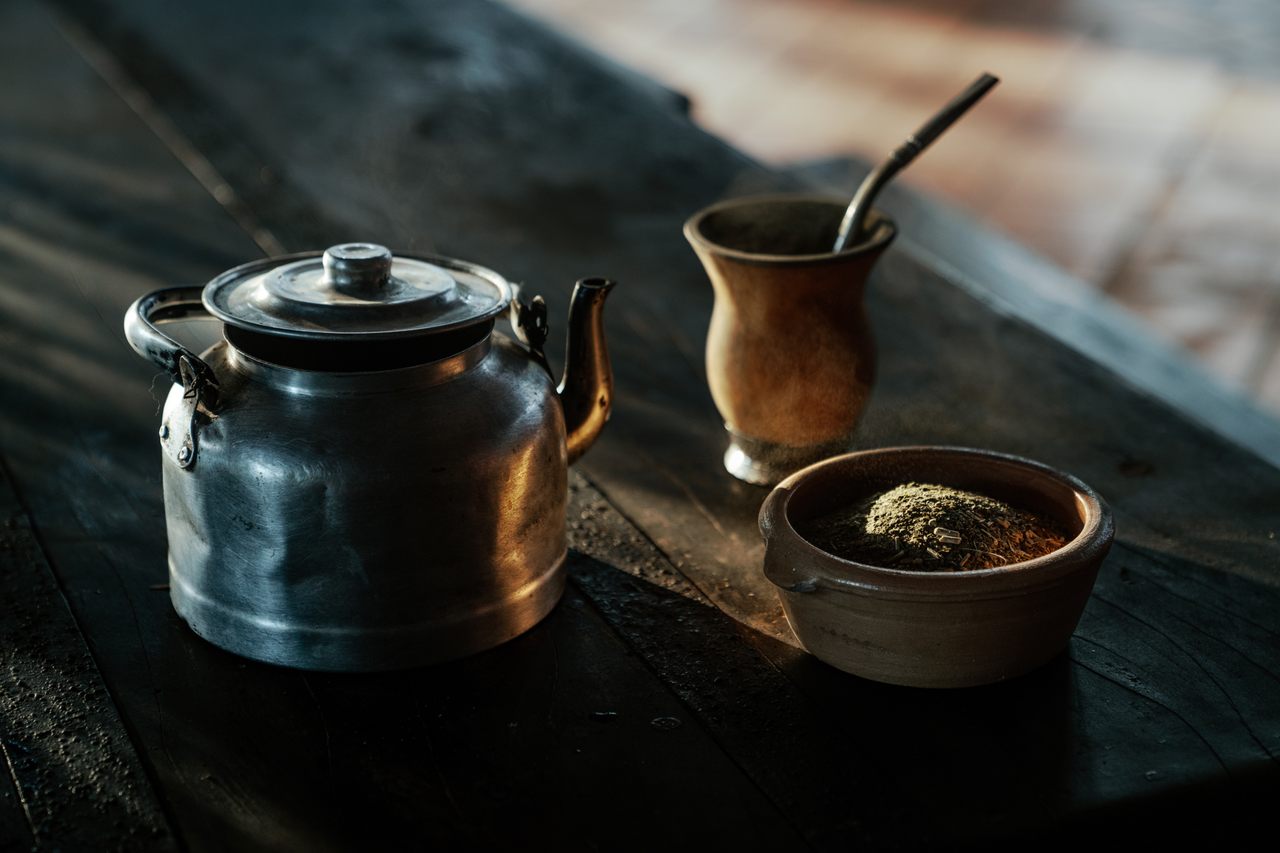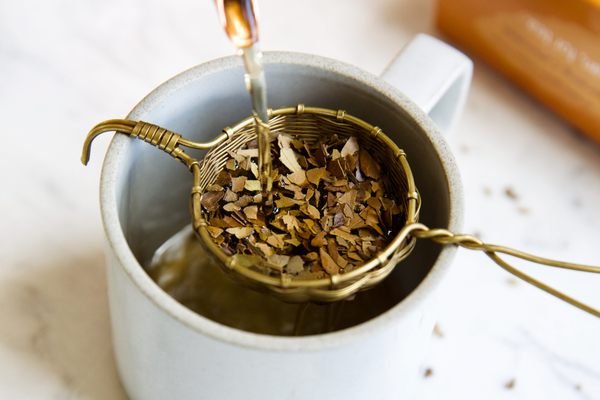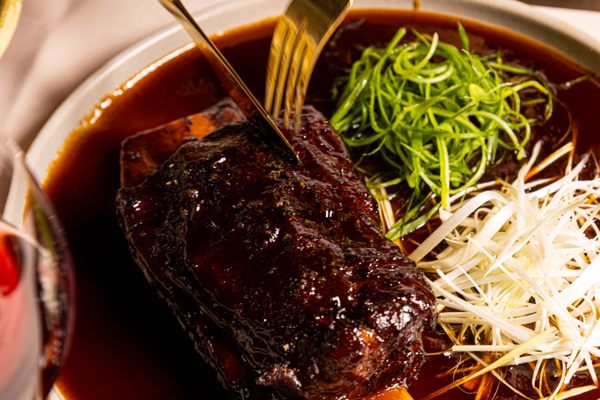The Ancient, Astonishing History of Yerba Mate
From centuries-old sacred rituals to energy drinks, one psychoactive plant has spread throughout the globe.
The story of yerba mate, the potent, caffeinated elixir made from the shoots and leaves of a subtropical evergreen, runs from sacred ceremonies held centuries ago in what is now Paraguay to modern-day soccer players in Argentina, techno obsessives in Berlin, and dissidents in Syria. In The Book of Yerba Mate: A Stimulating History, Christine Folch traces the global evolution of a plant so valuable it was once used as a form of currency.
As with other caffeine-rich plants, yerba mate’s history is bound up in colonialism and exploitation. Folch looks at its Indigenous history, from when the Guaraní people first began to steep this energizing brew centuries ago in what is now Paraguay. Yerba mate was so central to life in the region that its name in the Guaraní language simply means “plant.” When Spanish conquistadors and Jesuit missionaries realized its value, the drink quickly spread throughout the South American continent.
What ensued was a race to name, claim, and capitalize on the crop by various European powers. Folch tracks the rise of big mate growers, as well as how mate in various forms would ultimately spread from Lebanon to Cuba. It’s a tale filled with political upheaval, utopian communities, and brutal warfare.
Gastro Obscura spoke with Folch about what our choice of stimulants says about us, how this drink forever changed the Spanish Empire, and the other forgotten caffeinated plant probably growing right in your backyard.

You talk a lot about how branding and nomenclature matters. What does the name yerba mate tell us?
Names concretize and crystallize these really deep histories. Yerba mate has been consumed by Indigenous communities in South America since time immemorial. When the Spanish got to the area that we call Paraguay, they came across it really quickly and it spread throughout the Southern Spanish Empire.
Mate became an important part of this interesting South American economic circuit that included silver mines in [what is now] Bolivia. All the precious metals were being shipped to Europe, so mate became [currency] in South America. It became really popular in the growing, cosmopolitan city of Lima in the 1600s.
People are consuming this new thing, this beverage that comes from east of the Andes. And in this cross-cultural cauldron, you get the name yerba mate. So yerba is a direct [Spanish] translation of the Guaraní word ka’a, which means “plant” or “herb,” which is what they call the [plant] yerba mate.
Mate comes from the Quechua word mati, for cup. So the name itself contains the history of Indigenous contact with Europeans.

It’s easy to forget that tea and coffee are psychoactive plants, and mate as well. What does our consumption say about us?
I think a lot about the importance of social demand for new drugs or new psychoactive substances to arise. It’s really interesting when caffeine goes global. There are three caffeinated beverages that have been consumed since time immemorial in the Americas: yerba mate, guayusa—which is in the Western Amazon—and yaupon. But these are also very sacred spiritual rituals. It’s not the way we consume our coffee like, “Oh, God, I need something to get out the door.”
Coffee arose in the 1400s, also through mystic practice, through Yemeni Sufi mystics consuming it. Then it radiates through Arabia, gets to Turkey, and moves westward across Europe in the form of the coffee house. It’s in the 1600s that caffeinated products became really important as not just rituals of spiritual connection and community building, but in connection to work. They’re very connected to the idea of focused extended time, thinking about and being precise on something.
The classic argument is that the combination of caffeine plus sugar allowed the 19th-century industrial boom in the North Atlantic world. This is why in basically every factory or every office, there is a coffee machine in our coffee-drinking world, or a tea kettle.
Mate fits into that as well when it leaves its traditional usage as a more spiritually inflected drink to become this commodity that’s consumed all over the Spanish Empire. To close this circuit, I think the drugs of choice elucidate the society in which we live. Our hunger for certain kinds of psychoactive substances and our use of them as a society points to values.

The way that mate is consumed in South America feels very community-oriented. Could you talk a bit about the shared aspect of it?
One of the beautiful things about mate is that in South America the traditional way of consuming it creates community. It’s a multisensory experience because you’re tasting it, you are hearing it being drunk, but you’re also feeling it as it moves through a circle [of people].
There’s not a pill that you pop and it gives you this jolt. It’s something that takes and makes time. That creation of this moment creates incredible intimacy. I think a shared bombilla, the shared straw, violates a lot of maybe North Atlantic notions of hygiene. People will pass cigarettes to one another, but good God, you would never pass a straw.

What’s the deal with hipster mate?
I know that I call it hipster mate, but that’s not meant to be cynical. What we eat is part of our social fabric. We identify who we are through the recipes that we love, through the cuisine that means home. Even something like our caffeinated beverage of choice signals something about the group to which we belong.
You have the British with their tea, the U.S. South with its sweet tea, the United States in general with coffee. We have words that really connect culture and groups to what we consume. Once our caffeinated preferences got cemented, it became very difficult for new products to break in. In part because we have taste, and in part because there are vendors who are very committed to us buying from them regularly.
So there’s economic interests and personal taste, and they all come together in the cup of what we drink in the morning. Brazilian mate producers in the 19th century tried so hard to get into the North American market. [Around that time] Brazil became the king of coffee and then they were like, “We’ve got this other stimulant. Maybe we can sell it, too.”
Then in the 21st century, there’s a new crop of people who are not faithful to one stimulant only. We’re willing to drink coffee in the morning and tea in the afternoon. And so there’s this openness to having many different kinds of caffeine tastes and a desire to drink differently, to drink coffee in one way, tea a different way.
The canned, ready-to-drink form of mate really suits the post-industrial consumer because it doesn’t take time to produce. I think that quickness of consumption works for the post-industrial consumer who’s looking for something fast.

What surprised you in your research?
I knew that the trail of yerba mate would take me across the world. I didn’t know it would take me home twice. The first way it brought me home was the realization that I’ve had mate in my entire life, and I didn’t know. My family is Cuban and there’s a Cuban soda named Materva, which is a sugary, carbonated beverage made with yerba mate. My grandfather would drink it with us when we were kids in Florida.
The other way it brought me home is that mate has its North American cousin, yaupon. As I was working on the book, a few people were like, “There’s this thing that I’ve heard about that people used to drink here in the U.S. South that’s really similar.” Then, “Oh, it’s actually going outside of your apartment building.”
[Yaupon holly,] that shrubbery that has the rabbits burrowed under it, is a caffeinated beverage equivalent in terms of its economic potential probably to tea or coffee. And nobody ever trims it. Nobody ever waters it. So, of course, I picked it and then I gave a leaf to my husband, then we toasted it and made a drink out of it, and it was fantastic.
When I say it is all over the U.S. South, what I mean is you can be anywhere and within five minutes, you will walk into yaupon. It is the most boring-looking shrubbery everywhere. It’s right in plain sight. It’s around all the state capitals. It’s actually all over Walt Disney World.
So I love when you tell this amazing story of this lost tea beverage that the pirate Blackbeard used to drink and was traded in Paris and London. And then people look at it and they’re like, “That’s it?”
The interview has been edited and condensed.
Gastro Obscura covers the world’s most wondrous food and drink.
Sign up for our regular newsletter.
























Follow us on Twitter to get the latest on the world's hidden wonders.
Like us on Facebook to get the latest on the world's hidden wonders.
Follow us on Twitter Like us on Facebook